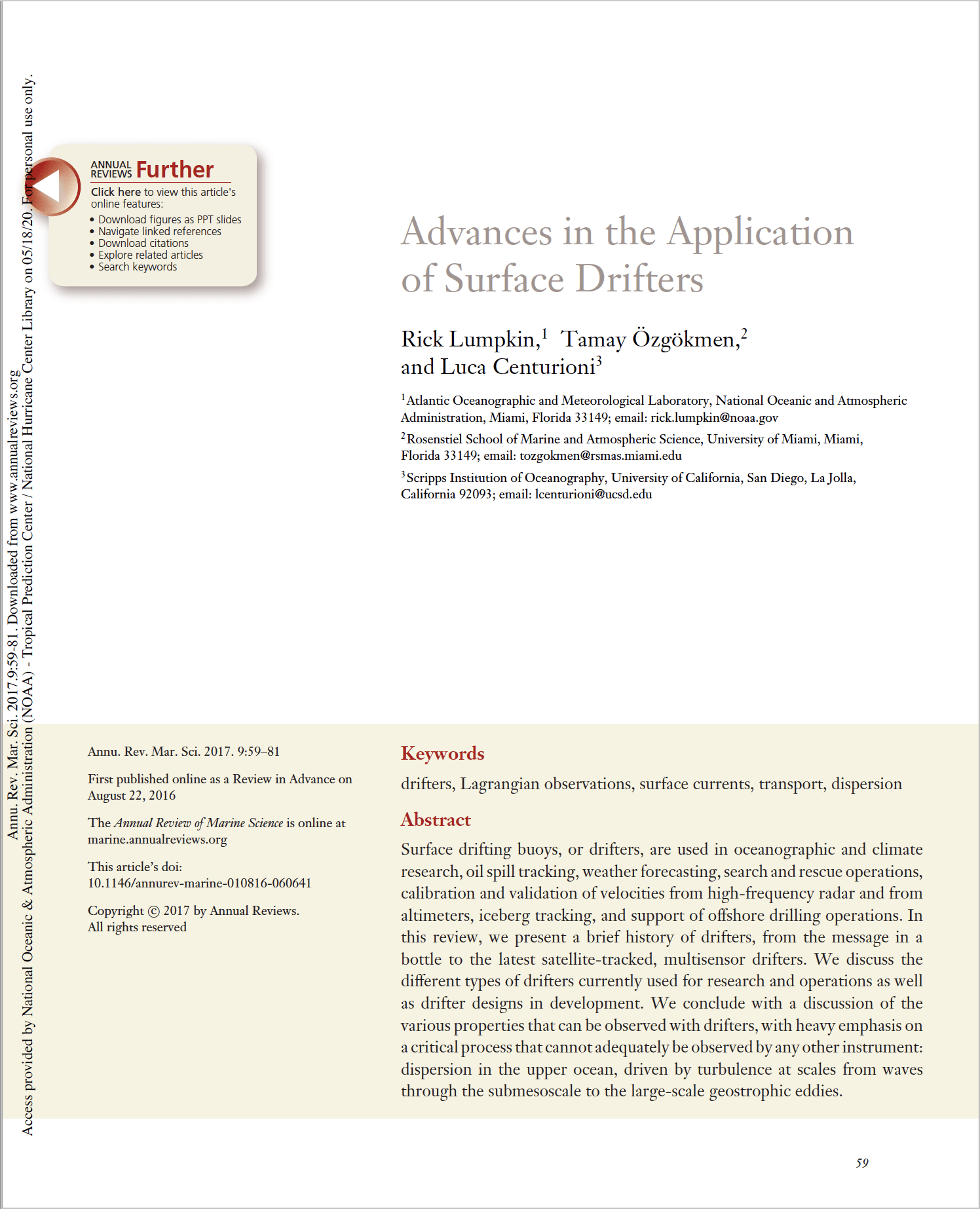Dispersion of Surface Drifters in the Tropical Atlantic
Van Sebille, E., Zettler, E., Wienders, N., Amaral-Zettler, L., Elipot, S., & Lumpkin, R. (2021). Dispersion of surface drifters in the Tropical Atlantic. Frontiers in Marine Science, 7, 1243.
Abstract: The Tropical Atlantic Ocean has recently been the source of enormous amounts of floating Sargassum macroalgae that have started to inundate shorelines in the Caribbean, the western coast of Africa and northern Brazil. It is still unclear, however, how the surface currents carry the Sargassum, largely restricted to the upper meter of the ocean, and whether observed surface drifter trajectories and hydrodynamical ocean models can be used to simulate its pathways. Here, we analyze a dataset of two types of surface drifters (38 in total), purposely deployed in the Tropical Atlantic Ocean in July, 2019. Twenty of the surface drifters were undrogued and reached only ∼8 cm into the water, while the other 18 were standard Surface Velocity Program (SVP) drifters that all had a drogue centered around 15 m depth….
Read Full Paper.



